Did you know that less than 30% of older adults regularly engage in physical activity, even though exercise for seniors can slash the risk of chronic illness by nearly half? Whether you’re aiming to maintain your independence, strengthen your body, or lift your mental health, safe and effective physical activity remains one of the best medicines for aging well. In this comprehensive guide, you'll unlock practical, science-backed strategies and discover new ways to keep moving confidently — no matter your age or starting point.
-
Why exercise for seniors is crucial for healthy aging — plus surprising, immediate benefits you can feel today
-
How much exercise older adults really need, and what experts recommend
-
The most effective and safest strength, balance, and aerobic routines for seniors
-
Tailored tips for building an exercise regimen that fits your needs and lifestyle
-
Immediate steps and free resources to begin your journey toward better health
Why Exercise for Seniors Matters: Surprising Facts and Immediate Benefits
Physical activity is not just a young person’s game. For older adults , engaging in regular exercise is a powerful, science-backed way to preserve independence and quality of life. Current studies reveal that seniors who maintain an active lifestyle experience better mobility, sharper memory, and a 40% reduction in serious health risks like heart disease and diabetes. Even simple movements, such as walking or gentle stretching, stimulate circulation and help relieve tension in the upper back and lower back.
For many, the health benefits are remarkably quick: within weeks, exercise for seniors can lead to improved sleep, mood, and energy. Just minutes of moderate aerobic activity a day can brighten your outlook and help prevent falls, which is the leading cause of injury among aging adults. The immediate payoff isn’t just physical—you’ll likely feel less stressed and more connected daily. By incorporating activities tailored for older adults, you gain not only extended years but greater freedom and enjoyment in each one.

Understanding Exercise for Seniors: Physical Activity Recommendations for Older Adults
Knowing where to start with exercise for seniors can feel overwhelming, especially with an abundance of advice available online. Authoritative guidelines, such as those from the National Institute on Aging, recommend at least 150 minutes of moderate intensity activity each week for older adults, with a focus on blending aerobic, strength, and balance exercises. However, every person is different, so your ideal activity mix may shift with your comfort and goals. The main objective is maintaining a regular physical activity routine that consistently engages your muscles and joints without causing strain.
Physical Activity Guidelines: How Much Exercise for Seniors is Enough?
The general recommendation for older adults is to aim for 30 minutes of moderate physical activity most days of the week. This can include brisk walking, swimming, or even gardening—anything that gently raises your heart rate and gets you moving. Importantly, guidelines emphasize not only aerobic activity but also strength training exercises at least twice a week, plus balance and flexibility work to help reduce the risk of falls. If 30 minutes at once feels daunting, sessions can be split into shorter bursts throughout the day for similar benefits.
Regular physical activity should always be tailored to your health status and any chronic conditions. The goal isn’t perfection but progress: even small, steady increases in your exercise regimen will deliver meaningful results. Consulting with your healthcare provider can further refine your plan, ensuring all activities enhance rather than hinder your mobility and well-being.
The Role of Regular Physical Activity in Healthy Aging for Older Adults
Remaining physically active plays a transformative role in healthy aging for older adults . Beyond maintaining muscle and bone strength, engaging in regular physical activity reduces the risk of heart disease, lowers the likelihood of developing some cancers, and supports long-term mental health. Immune function is also boosted, allowing the body to fend off infections more efficiently. Daily movement can relieve tension that accumulates from prolonged sitting or inactivity, targeting both the upper back and lower back.
Importantly, the role of regular exercise for seniors extends far beyond simply adding years to your life—it enriches those years with greater independence, cognitive clarity, and ease in performing daily activities. As energy improves, so does your ability to participate in your favorite hobbies and maintain important social ties, which are both crucial components of healthy aging.
Top Health Benefits of Exercise for Seniors
Staying physically active yields far-reaching health benefits for seniors, with positive impacts on both body and mind. Improved cardiovascular function, enhanced muscle strength training, and sharper mental health are just the beginning. Exercise for seniors can also reduce the risk of osteoporosis, manage symptoms of chronic conditions like arthritis, and contribute to longevity. One significant benefit is the prevention of falls—through targeted balance and strength training, older adults improve stability, which is critical to sustaining independence.
-
Enhanced cardiovascular health and reduced heart disease risk
-
Better mental health, including decreased anxiety and depression
-
Increased muscle and bone strength for improved balance and fall prevention
-
Boosted immune system and improved chronic disease management
-
Heightened flexibility, agility, and functional independence
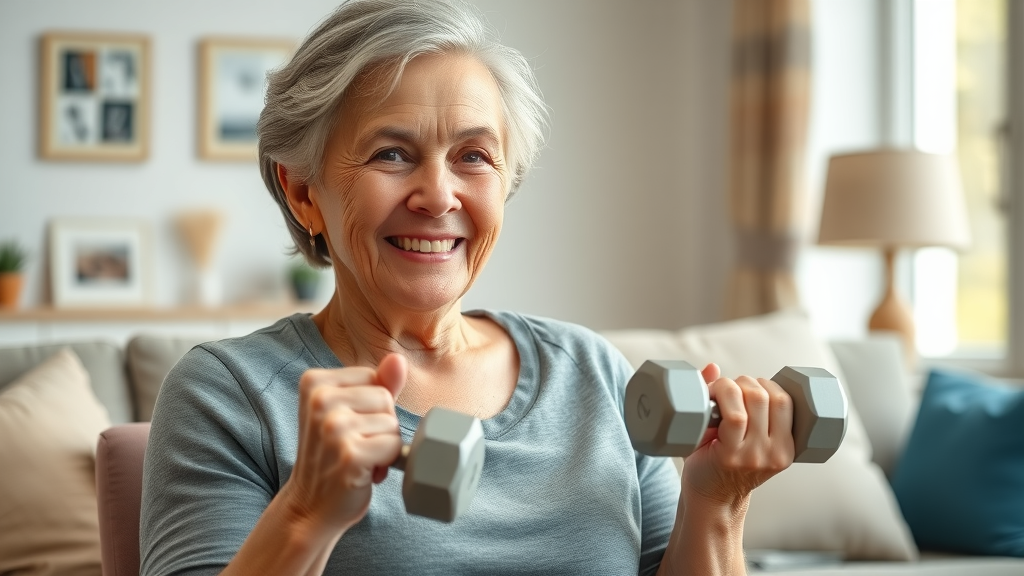
Exercise for Seniors and Improved Mental Health
Many people underestimate the profound effect that exercise has on mental health . Regular physical activity, particularly aerobic activity and strength training, prompts the brain to release endorphins and serotonin, which counteract the symptoms of depression and anxiety common in older adults. Structured exercise routines also instill a sense of accomplishment, boosting self-esteem and motivation. Seniors often report clearer thinking and sharper memory within weeks of starting an exercise regimen, underscoring the brain-boosting benefits of movement at any age.
Social elements of exercise are equally important. Group classes or walking clubs provide critical community support, combatting the isolation that can come with aging. Even participating in exercise videos from home can foster routine and structure, essential ingredients for positive mental health outcomes.
Reducing Chronic Disease Risks through Physical Activity for Older Adults
Exercise for seniors is a potent tool for reducing chronic disease risk. Engaging in regular physical activity can help manage and even prevent high blood pressure, type 2 diabetes, and heart disease. For those already diagnosed with chronic conditions, appropriate exercise can ease symptoms and decrease medication reliance, allowing for better quality of life. The key is consistency: sustained aerobic and strength training work together to keep the heart, blood vessels, and muscles in optimal shape.
Physical activity also regulates weight, balances blood sugar levels, and enhances immune response, offering added defense against acute illness. By sticking to a well-rounded routine, older adults can expect not only fewer doctor visits but greater day-to-day comfort and mobility.
Exercise for Seniors for Strength, Balance, and Independence
Training exercises that target strength and balance help older adults maintain independence, making it easier to handle daily tasks like carrying groceries, rising from a chair with your feet firmly planted, and climbing stairs. Strength training directly combats the muscle atrophy that naturally occurs with aging. Improving balance exercises reduces risk of falls, a major concern for seniors seeking to avoid injury and hospitalization.
Every bit of progress in muscle strength or flexibility pays off in functional freedom—meaning more autonomy, better living, and less reliance on caregivers. As with all exercise for seniors, gradual increases in activity and intensity are the safest way forward.
"Research shows that regular physical activity is one of the most important things older adults can do for their health." – National Institute on Aging
Types of Safe Exercise for Seniors: From Walking to Strength Training
There’s no one-size-fits-all when it comes to physical activity for older adults. The best approach blends a range of aerobic activity , strength training , balance exercises , and flexibility work. Variety keeps your routine interesting, ensures you target all major muscle groups, and supports comprehensive injury prevention. Walking, swimming, and cycling are excellent aerobic choices, while light resistance bands or bodyweight routines can safely build strength at home or in a class.
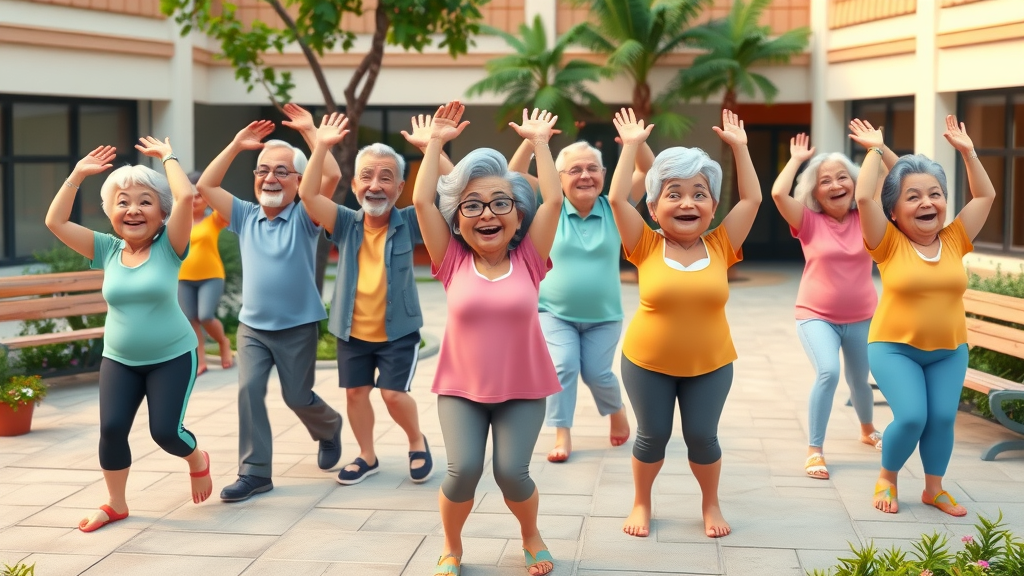
Aerobic Physical Activity: Best Choices for Older Adults
Aerobic physical activity gets your blood pumping and works the heart and lungs—vital for overall health benefits. For seniors, the best options are those that are low-impact and gentle on the joints, yet still effective at raising your heart rate. Activities such as brisk walking, water aerobics, moderate cycling, and dancing are both accessible and enjoyable, making it easier to adhere to your regular physical activity goals. Aerobic activity should feel challenging but not overwhelming—if you can hold a conversation while moving, you’re likely in the right intensity zone.
Including 150 minutes of aerobic activity per week, either in longer sessions or shorter daily bouts, builds stamina and helps manage weight, cholesterol, and blood sugar. Remember, even light gardening or household chores count as meaningful movement when performed consistently.
-
Brisk walking (outdoors or on a treadmill)
-
Swimming or water aerobics
-
Moderate cycling (stationary or road bike)
-
Low-impact group dance or Zumba Gold
-
Chair aerobics (perfect for those with mobility concerns)
Strength Training and Resistance Exercise for Seniors
Strength training exercises build muscle mass, improve bone density, and make daily tasks easier. For older adults, resistance can come from light weights, resistance bands, or body weight exercises such as squats and wall push-ups. The emphasis is on slow, controlled movements—think of lifting a lightweight and slowly lowering it to better engage the muscles and protect the joints. Sessions two to three times a week are enough to see major improvements in posture, core stability, and functional strength.
Upper and lower body routines should focus on large muscle groups: legs, chest, upper back, and core. This approach not only makes you stronger, but also builds the stability needed to minimize the risk of falls and other injuries. Always warm up before moving into resistance work and consult a health professional if you’re starting strength training for the first time.
Flexibility and Balance Exercises: Improving Stability in Older Adults
Flexibility and balance exercises are essential for maintaining stability and confidence. Gentle stretching relieves tension, especially around the upper back and lower back . Tai chi, yoga, or simple standing heel-toe exercises can dramatically improve balance and are highly recommended for fall prevention. These routines are particularly valuable for seniors recovering from injury or managing chronic conditions, ensuring that ligaments and joints stay supple and joints move freely.
Adding flexibility and balance work to your routine only takes a few minutes a day, but the cumulative effects—better posture, reduced pain, greater agility—support a more active lifestyle overall.
|
|
|
|
Comparison of Exercise Types for Seniors |
|
Type |
Key Benefits |
Examples |
Frequency |
|---|---|---|---|
|
Aerobic |
Cardio health, energy, weight control |
Walking, swimming, cycling |
3-5 times/week |
|
Strength Training |
Muscle tone, bone strength, independence |
Light weights, resistance bands, body weight |
2-3 times/week |
|
Flexibility |
Joint range, relieve tension |
Gentle stretching, yoga |
Daily |
|
Balance |
Fall prevention, stability |
Tai chi, heel-toe walking |
Daily |
Creating a Personalized Exercise Plan: Getting Started with Exercise for Seniors
Personalizing your exercise routine is the key to safety and long-term success. Begin by assessing your own strengths, preferences, comfort level, and health history—this ensures your routine is both effective and enjoyable. Whether you’re an active senior ready to intensify workouts or new to physical activity, setting realistic short-term goals helps build positive momentum and keeps you motivated as you progress toward a more active lifestyle.
Assessing Current Fitness Levels in Older Adults
Start with an honest evaluation of your current fitness level. Can you walk a block comfortably? Rise from a chair with your feet flat? These simple movements provide a baseline, and many community centers and physiotherapists offer free fitness assessments for seniors. Key indicators to consider include stamina, strength, balance, and flexibility—knowing your starting point helps set safe and achievable exercise goals, reducing the risk of injuries as you advance.
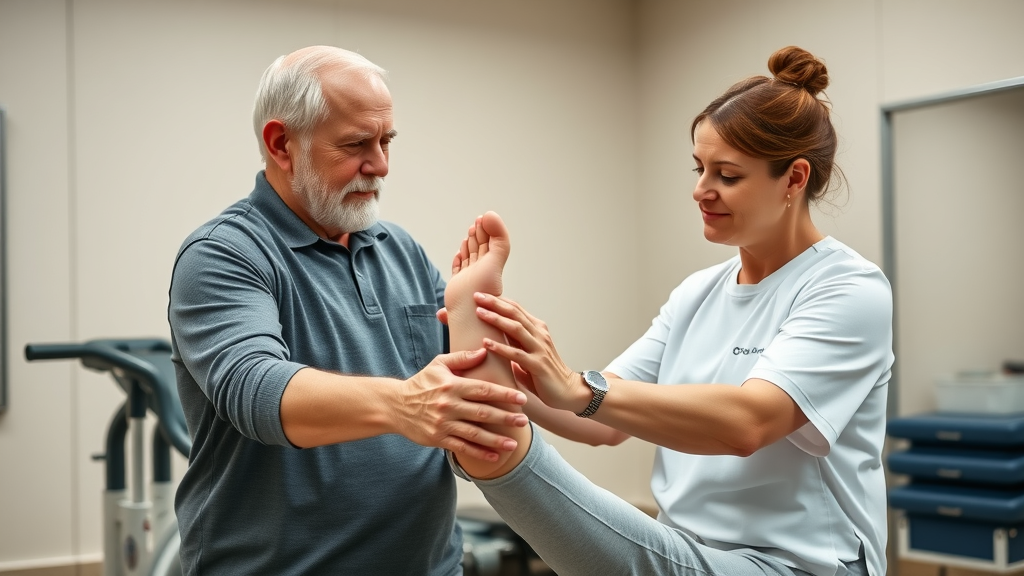
Setting Realistic Exercise Goals for Seniors
To ensure success, set achievable exercise goals that are tailored to your fitness level and lifestyle. Begin by aiming for small increases in the frequency or duration of physical activity, rather than dramatic leaps. Celebrate milestones, whether it’s walking an extra five minutes or adding a new balance exercise to your routine. Focus on consistency over intensity, remembering that the goal is steady, injury-free progress. Document your activities in a journal or with an app to visually track improvements and stay inspired.
Talk with your healthcare provider about any limitations—together you can create an exercise regimen that both challenges you and keeps you safe.
How to Safely Progress Intensity Activity for Seniors
Once you’re comfortable with your starting routine, you can safely progress by gradually increasing the intensity activity . Strategies include walking a little faster, adding light ankle weights, or extending sessions incrementally. The focus should still be on slow, controlled motion; for example, slowly lift and lower weights or complete exercises on a stable surface before experimenting with new moves. Pay attention to how your body feels, especially in the upper back or lower back, and adjust accordingly.
Remember, it’s perfectly normal for progress to feel gradual. Slow and steady changes dramatically reduce the risk of falls or overuse injuries and help maintain motivation over time.
Safety Tips and Precautions: Exercise for Seniors
Safety is paramount in every exercise for seniors routine. The best outcomes come from listening closely to your body and adapting activities when needed. If you’re managing a chronic condition or have mobility limitations, modify exercises to suit your range of motion—chair aerobics, for example, offer a powerful workout when standing poses are too strenuous. Always use proper, supportive footwear, clear your workout area of hazards, and warm up before any training session.
Modifying Physical Activity for Chronic Conditions
Physical activity is still possible—even essential—if you’re coping with chronic conditions like arthritis, diabetes, or osteoporosis. The key is modification: reduce the intensity, perform movements in a seated position, or break longer sessions into short, manageable intervals. Speak with your healthcare team or a physical therapist to customize your plan and ensure every move protects, rather than stresses, sensitive joints and tissues.
Remember, some activity is always better than none. Modified routines will still deliver the health benefits described earlier, improving mental health and functional ability for older adults at every level.
Preventing Injuries: Safe Environments and Routines
One of the top priorities for older adults is fall prevention . Create a safe workout environment by ensuring clear, clutter-free spaces, using a sturdy chair for support during balance exercises, and double-checking that footwear fits well and has non-slip soles. Perform a warm-up to raise your heart rate gently, and include stretching to relieve tension in muscles and joints. Listen to your body—if you feel pain or excessive fatigue, modify or stop the activity. Routine maintenance of your gear (mats, weights, sneakers) is crucial to minimize risk and ensure a positive workout experience each time.
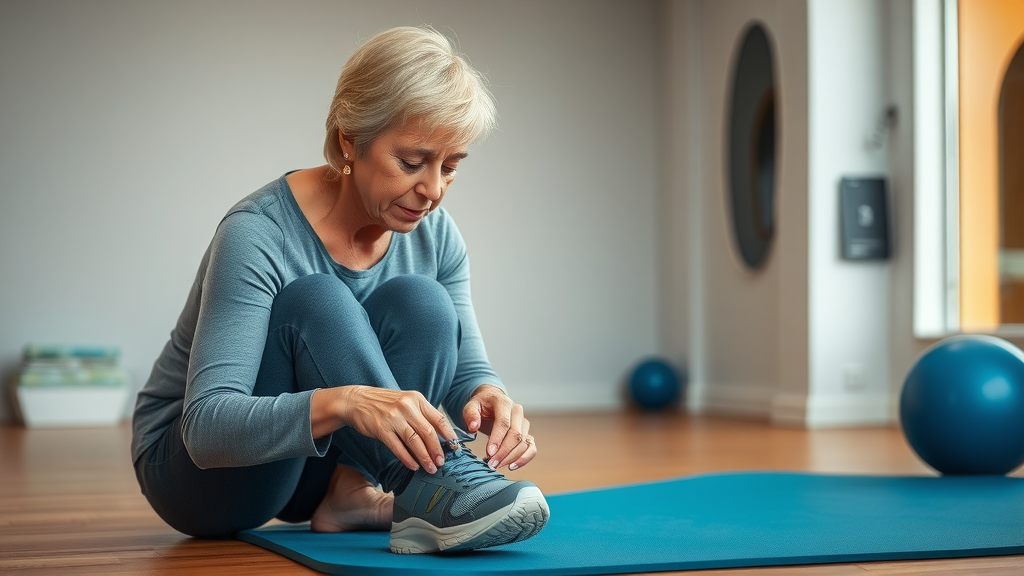
Motivation and Support: Helping Older Adults Maintain Physical Activity
Sticking with a regular exercise routine becomes easier with the right support system. Accountability, whether through a walking group, free local classes, or exercise videos at home, promotes consistency and makes movement more enjoyable. Engaging others transforms exercise from a chore into a rewarding social activity, and sharing progress activates healthy competition and lasting habits.
Finding Community and Free Exercise Programs for the Elderly
Many communities offer free or low-cost classes tailored for seniors—look for options at recreation centers, YMCAs, or local nonprofits. Online exercise videos and virtual programs are also widely available, making it simple to join classes from the comfort of home. Connecting with other older adults who share your interests amplifies motivation and reduces the feelings of isolation that sometimes come with aging. Most importantly, group exercise fosters fun and builds friendships, turning staying active into a joyful daily event.
Daily Routines That Encourage Exercise for Seniors
Building movement into your daily habits is one of the most effective ways to ensure long-term adherence to physical activity. Schedule workouts at the same time each day, set reminders, and incorporate movement into household tasks—think stretching during TV commercials or taking stairs instead of elevators. Celebrate all activity, not just structured exercise; walking a friend’s dog or gardening counts and keeps you committed to an active lifestyle .
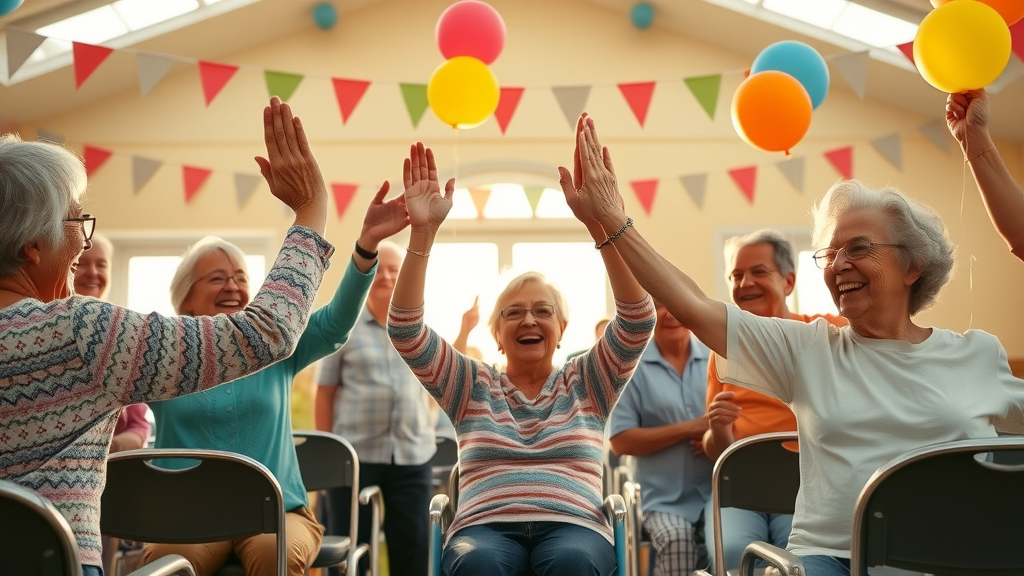
Answers to Common Questions About Exercise for Seniors
What is the most beneficial exercise for seniors?
While every older adult is different, brisk walking is widely considered one of the best exercises for seniors. It boosts cardiovascular health, supports weight management, and is gentle on joints. Combined with balance exercises and strength training, walking forms the foundation for a well-rounded, safe exercise regimen.
What is the number 1 exercise to increase balance in seniors?
Tai chi is often cited as the top exercise to improve balance in older adults. Its gentle, flowing movements specifically target core strength and stability, dramatically reducing the risk of falls. Heel-to-toe walking and standing on one leg are also excellent for building balance safely at home.
Is there a free exercise program for the elderly?
Yes! Many senior centers, community halls, and healthcare facilities offer free exercise classes tailored for older adults. Additionally, trusted online platforms provide a range of free exercise videos designed for varying mobility levels, making physical activity accessible to everyone, regardless of budget or location.
What is the number one exercise to do when you get older?
Experts agree that combining aerobic activity (like walking or swimming) with strength training and balance exercises provides the most comprehensive health benefits for seniors. Focus on consistency and safety—find what you enjoy and can sustain, ensuring you remain active for years to come.
Answering Top FAQs About Exercise for Seniors
-
How often should older adults exercise? Most health authorities recommend at least 150 minutes of moderate activity per week, plus strength and balance work 2-3 times weekly.
-
Are balance exercises really necessary? Yes! Regular balance exercises can reduce the risk of falls and help preserve independence.
-
Is it safe to start strength training after age 65? Absolutely—just begin slowly, use light weights or resistance bands, and consider professional supervision at first.
-
What are common signs to stop or modify an exercise? Significant pain, dizziness, or shortness of breath—always listen to your body and seek advice if you’re unsure.
-
Can I exercise with chronic health conditions? In many cases, exercise can be adapted for chronic conditions—speak with your doctor or a physical therapist to build a safe plan.
Five Key Takeaways Older Adults Should Remember About Exercise for Seniors
-
Consistency is critical—move your body most days for the best results.
-
Include a mix of aerobic, strength, balance, and flexibility exercises in your regimen.
-
Personalize your routine to your abilities and health conditions for increased safety and enjoyment.
-
Seek out support—group classes, friends, or exercise videos can keep you motivated.
-
Every bit of movement counts; progress, not perfection, delivers lifelong health benefits.
Safe Senior Exercise Routines: Step-by-Step Video Demonstration
Watch our video guide for simple, safe, and effective exercise for seniors routines you can try today, including modifications for different fitness levels and mobility concerns.
Empower Yourself: Start Your Safe Exercise for Seniors Journey Today
Take action for your health today—choose an exercise that feels right, go at your own pace, and celebrate each step. Your active future starts now!
 Add Row
Add Row  Add
Add 




Write A Comment